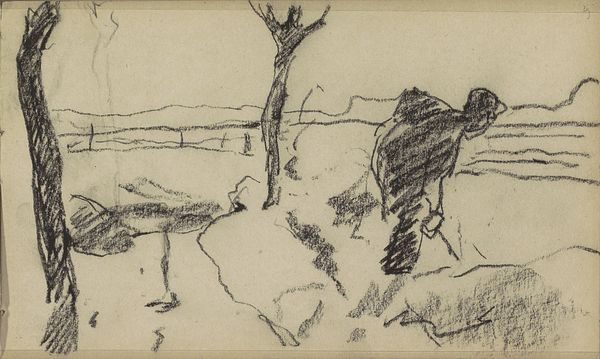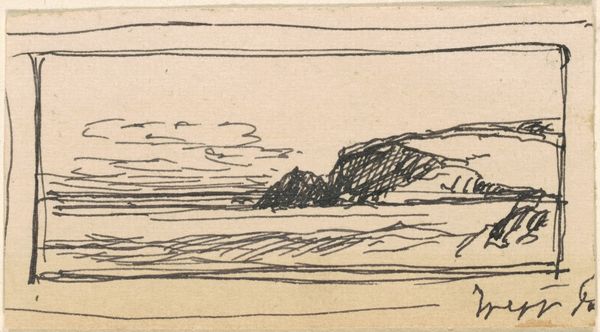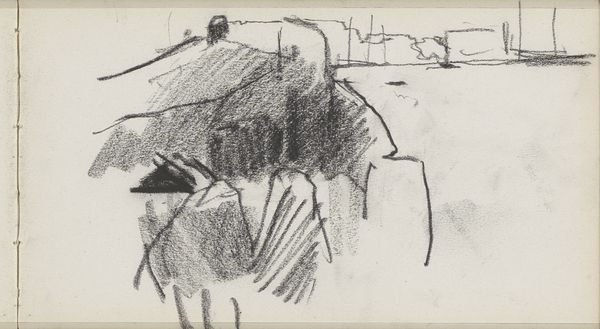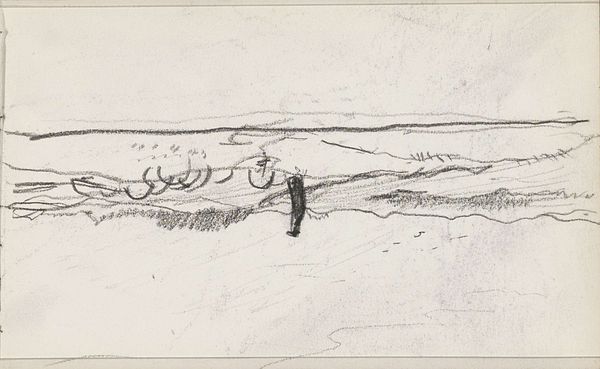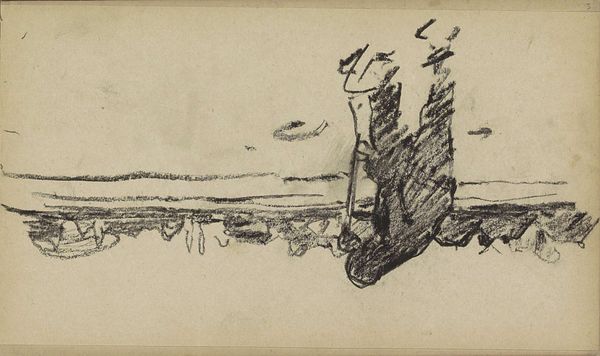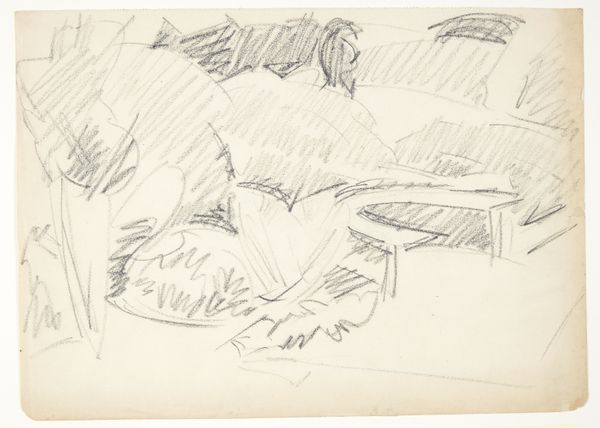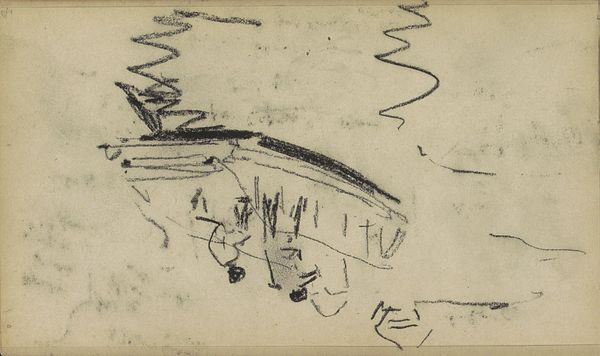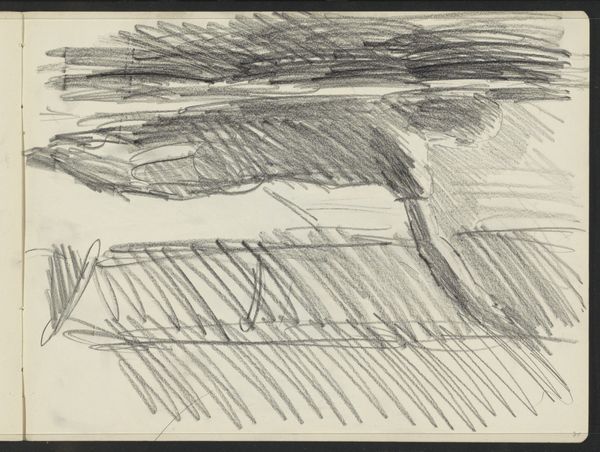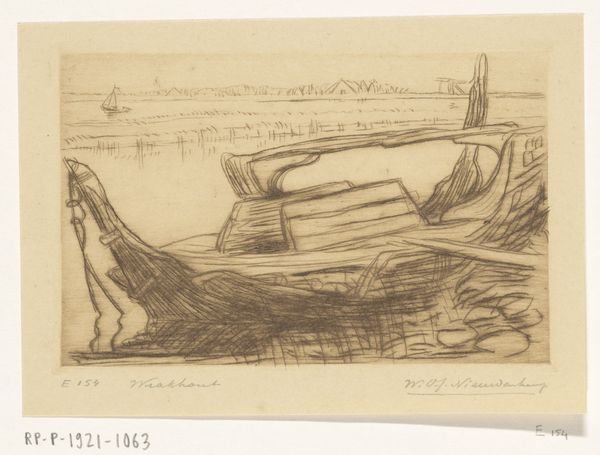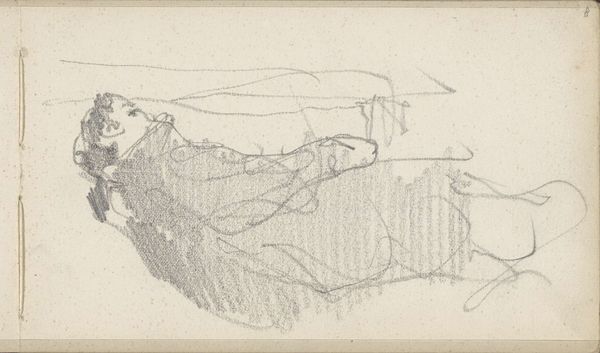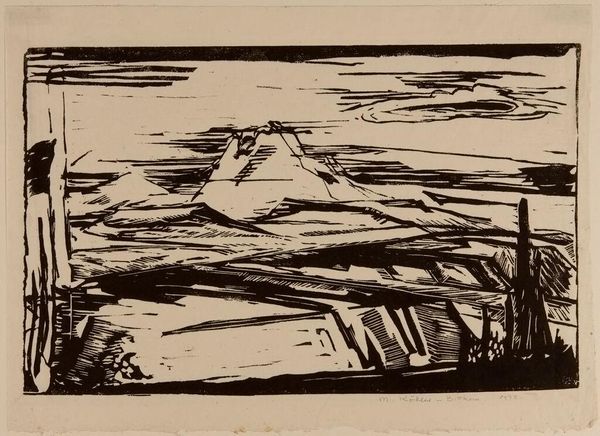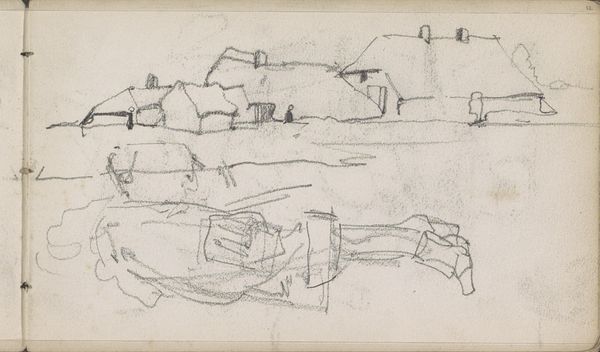
drawing, print, ink
#
drawing
# print
#
landscape
#
german-expressionism
#
ink
#
geometric
#
expressionism
Copyright: National Gallery of Art: CC0 1.0
Editor: This is Paul Klee's "View on a River" from 1912, made using ink. I find it compelling how he conveys depth and form with such sparse lines, almost like shorthand for a landscape. It seems very abstracted. What elements stand out to you in terms of its structure? Curator: Certainly. Note how Klee reduces the landscape to essential geometric forms. The composition relies on a network of lines that create a sense of spatial recession. The darker, thicker lines defining what appears to be the foreground, contrasted with the fainter marks suggesting the distant river and horizon, are critical. Observe the relationship between these linear elements; the work operates structurally like a carefully arranged scaffolding. Do you perceive a clear hierarchy in the lines themselves? Editor: I see how some lines are bolder and seem to "hold" the composition together, almost like main structural beams. Are these deliberate choices, or is it more about capturing a fleeting impression? Curator: Klee's calculated mark-making suggests a deliberate act of distillation. He doesn’t merely transcribe nature; instead, he reconstructs it using a visual language of his own creation. Consider, too, the tonality – the variations in line thickness create a subtle but noticeable depth that the composition hangs upon. This tonality interacts reciprocally within each definable area of form: foreground, riverbank, water. Each space contains enough information to communicate, while still maintaining that stark shorthand you accurately observed. Editor: That’s fascinating. It’s like he's revealing the underlying geometry of the landscape. I see so much more now in how carefully crafted the linear relationships and gradations actually are, rather than just a sketch. Curator: Precisely. Klee prompts us to look beyond surface appearances and consider the underlying framework that gives structure to the natural world and, by extension, to the work itself. Editor: Well, I definitely see a new complexity to the artwork, and appreciate your formalist lens on Klee's geometric structures. Curator: Indeed. Art invites continuous conversation, so come back to it and trust that your perspective shall further shift and morph!
Comments
No comments
Be the first to comment and join the conversation on the ultimate creative platform.
